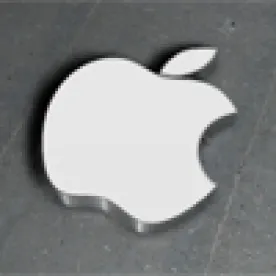In the next few months, the Supreme Court will hear arguments in Apple Inc. v. Pepper (In re Apple iPhone Antitrust Litig.), a potentially significant “application” of antitrust law to e-commerce. At stake is the almost $11.5 billion in revenue the App Store now earns Apple annually (not to mention what other types of app stores generate these days).
The case will address the interpretation of the Supreme Court’s “direct purchaser” rule in deciding who can sue under the antitrust laws (specifically, Section 4 of the Clayton Act) and the application of that rule to purchasers in the electronic marketplaces that play a large and ever-growing role in the economy and consumers’ lives.
While at first glance this might seem to be slightly removed from “government enforcement,” upon closer inspection, it is not. The United States has weighed in as an amicus on Apple’s behalf (and seeks to argue alongside Apple before the Court) because, in its view, not only does the “Department of Justice ha[ve] responsibility for enforcing federal competition laws and a strong interest in their correct application,” but also because the federal government considers private antitrust enforcement to be “an important supplement to the government’s own antitrust enforcement efforts.” Moreover, both federal corporations and states have long had the ability to sue under Section 4 to combat perceived antitrust violations.
In Apple, a putative class of iPhone owners who have purchased apps from the App Store allege that Apple has engaged in monopolistic behavior in the market for iPhone applications by only allowing iOS users to install applications through its App Store. Apple charges a 30 percent commission to developers on all paid app sales made through the App Store. When a customer buys an app from the App Store, Apple remits 70 percent of that purchase price (which the developer sets) to the developer and retains the balance.
The question presented in Apple is whether iPhone owners who purchase applications through the App Store have antitrust standing to sue Apple because of the allegedly artificially high commission that Apple charges app developers.
The Supreme Court first established the “direct purchaser” rule in Hanover Shoe, Inc. v. United Shoe Machinery Corp., 392 U.S. 481 (1968) and Illinois Brick Co. v. Illinois, 431 U.S. 720 (1977). It provides that only the “overcharged direct purchaser” of a monopoly-priced product has standing to sue under Section 4 of the Clayton Act.
The Court has explained that two concerns animate its “direct purchaser” rule. First, the Court has worried that it would be difficult or impossible to apportion antitrust damages after multiple downstream sales of a monopoly-priced product. Second, the Court expressed concern over the possibility of duplicative damage awards if direct purchasers and downstream purchasers all have standing to sue for the same antitrust violations.
Plaintiffs argued that they are “direct purchasers” of apps from Apple, so they satisfy the direct purchaser rule. Apple has countered that consumers actually buy apps from developers, and Apple in turn sells distribution services to those developers.
The District Court sided with Apple and dismissed plaintiffs’ antitrust claim, relying on Illinois Brick. However, the Ninth Circuit reversed, agreeing with plaintiffs. The Court concluded that iPhone app buyers are direct purchasers from Apple, and that Apple is an app “distributor” which (at least in the Ninth Circuit) potentially subjected Apple to liability. The Ninth Circuit rejected Apple’s argument that its App Store is analogous to a shopping mall that simply leases physical space to various stores that actually sell to customers.
The Ninth Circuit acknowledged that its decision conflicted with the Eighth Circuit’s decision in Campos v. Ticketmaster, 140 F.3d 1166 (1998). In Campos, the Eighth Circuit held that consumers who purchased tickets from Ticketmaster were indirect purchasers and therefore had no standing to sue.
Both sides have submitted their principal briefs. Numerous amici, including the United States (which has sided with Apple), have weighed in also.
Apple has said that the Ninth Circuit has simply misapplied Illinois Brick and that consumers are simply asserting a prohibited pass-through theory of harm. Apple has argued that, simply because consumers purchase apps through the App Store, does not make consumers direct purchasers of the app distribution services that Apple sells to app developers. Apple has also argued that the Ninth Circuit’s focus on the App Store’s distribution “function” is not only contrary to Supreme Court precedent but also unworkable in practice. The United States has essentially agreed with Apple’s positions.
The App Store customers, by contrast, maintain that, because of how Apple has created the technology inherent both in iPhones and the App Store, consumers actually purchase apps directly from Apple, acting as a monopolist, via the App Store. Since they are purchasing apps directly from the monopolist, and not through any intermediaries, they are “direct purchasers” entitled to sue for antitrust damages under Illinois Brick.
How the Court will resolve this case seems to depend at least partly on whether it views the operative transaction as taking place between Apple and consumers or between consumers and developers with Apple simply providing the marketplace where the transaction occurs.
The Court will also need to address how concerns raised in Hanover and Illinois Brick will be impacted by its decision. For example, if the Court affirms the Ninth Circuit’s decision, would app developers also have standing to sue for the exact same damages? Would its decision be narrowly tailored to online marketplaces for digital goods, or apply broadly to all areas of commerce?
Whatever the outcome, the Court’s effort to apply antitrust principles originally created to address products like shoes and bricks to the world of digital goods and services is likely to have profound consequences for electronic commerce and government’s enforcement of federal antitrust laws.
This blog was co-authored by Brian Casey and Thomas Everett.




 />i
/>i

